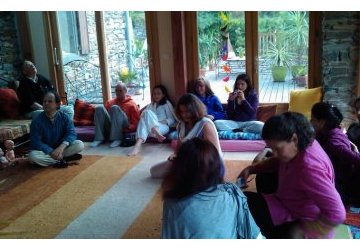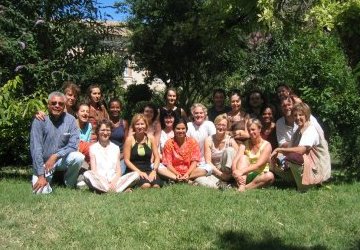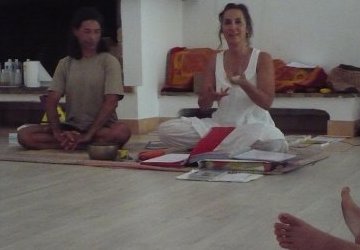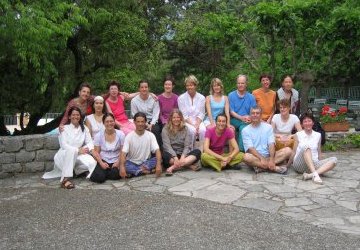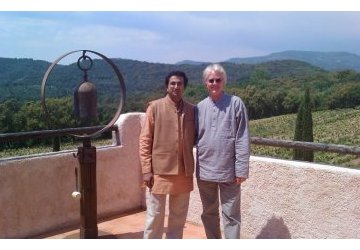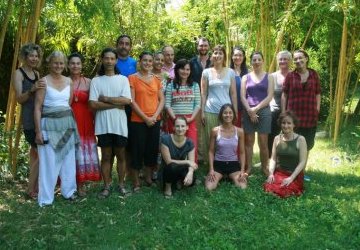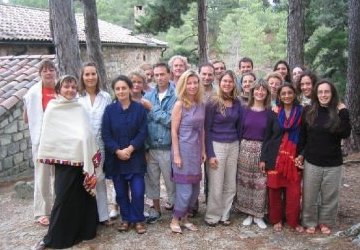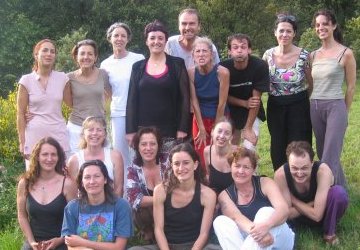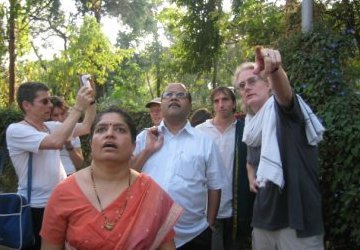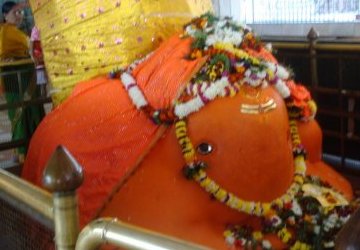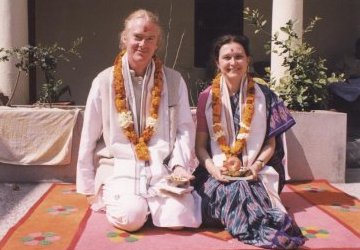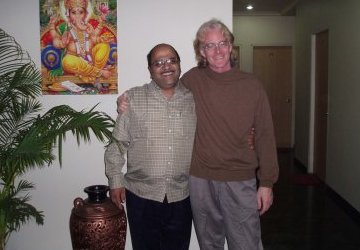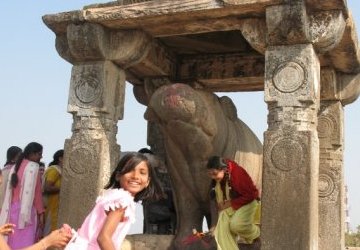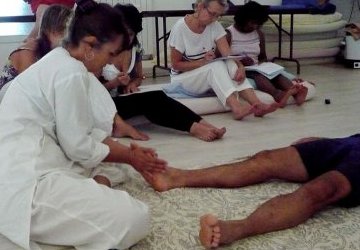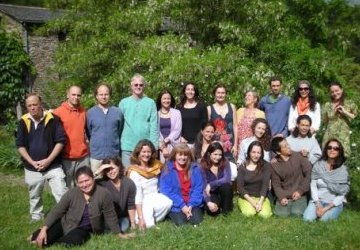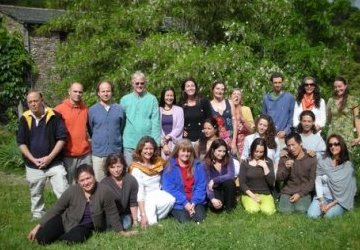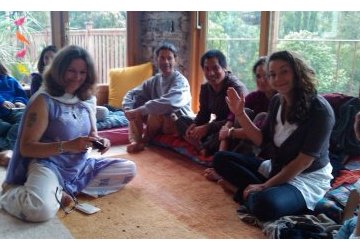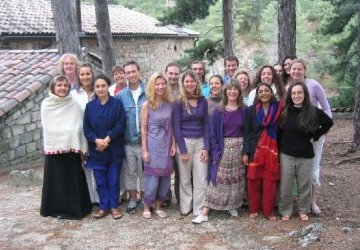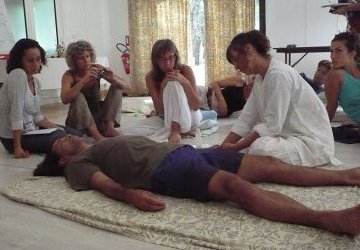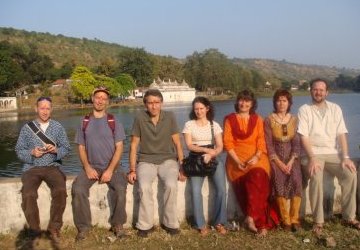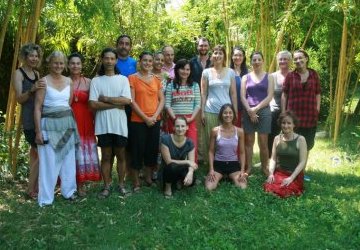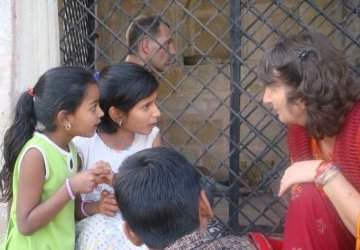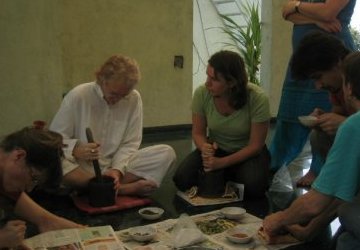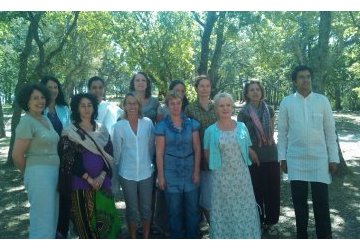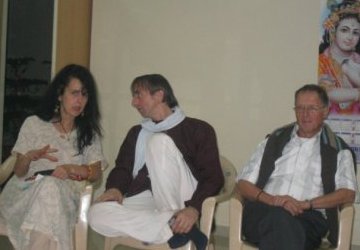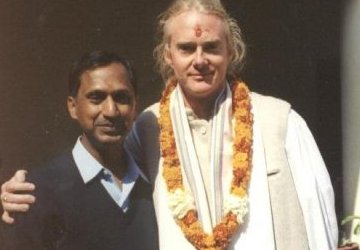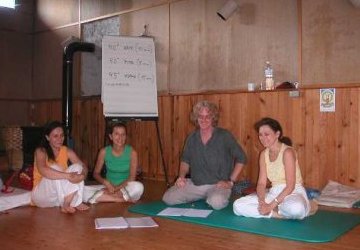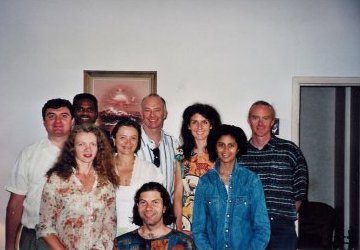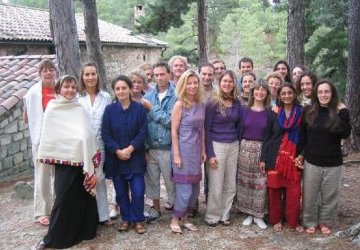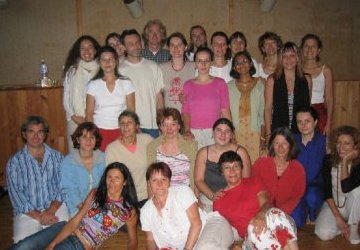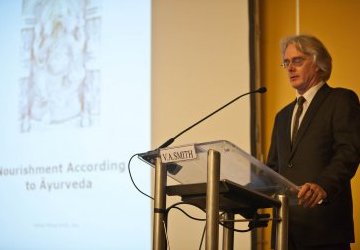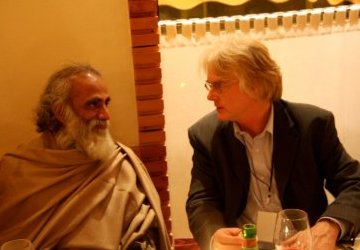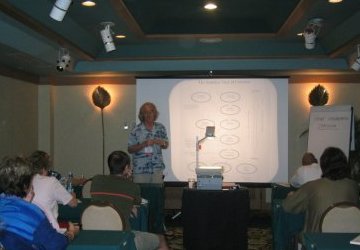Concepts in Life and Yoga
Ayurveda and Yoga are sisters - Ayurveda is the physical aspect and Yoga is the mental and spiritual aspect. The practice of hatha yoga and yoga asana fall under the realm of Ayurveda as it deals with the physical body. This article addresses one of the main problems we face when we are pursuing true Yoga - striving to unite the individual mind with the cosmic mind. This union is the beginning of freedom which happens when the cosmic merges back into its source.
One of the most difficult obstacles in Yoga is the tendency of the mind to form concepts. In fact, the mind itself is often referred to as a concept in Jnana Yoga (the path of knowledge). This tendency is often quite subtle and difficult to detect, therefore some explanation is necessary to clarify the possible obstacles.
The soul (Jiva) is tied to the body in each incarnation by two factors: latent impressions (Vasanas and Samskaras), and Prana. The life force or Prana has an intimate relationship to the latent impressions which are the primary cause of reincarnation. It is the prana that animates the body / mind and binds the impressions in the Subtle Body (Sukshma Sharira). Indeed prana is a synonym for life in Sanskrit, without it the body dies.
The latent impressions are the primary cause of motivation in life. They are also the basis of which all new concepts are constructed upon. In essence all yoga practice works towards two objectives - harmonization of the prana and elimination of the latent impressions through Dhyana and Samadhi. Generally yoga works through the prana to attain Self knowledge. However, another possibility also exists through Vedanta and Jnana Yoga. The Yoga Vasistha, one of the oldest and most interesting scriptures of Yoga, describes yoga like this:
"They call it yoga which is the method by which this cycle of birth and death ceases. It is the utter transcendence of the mind and it is of two types: Self-knowledge is of one type; restraint of the prana is the other type. However, yoga has come to mean only the latter." (VI. 1, 13.3)
From this definition of yoga we can see that the mind is the primary obstacle in yoga regardless of the path. This scripture goes on to say that the mind is nothing more than prana and impressions - some latent and some active. The Yoga Sutras of Patanjali also indicate this when in I.2 it is said: "Yoga is the ability to direct the mind exclusively toward an object and sustain that without distraction."
The ability to hold the mind in one position controls not only the prana but also stops the latent impressions from controlling the individual. Perhaps some explanation of what a latent impression is would be helpful. They are the impulses that are below the subconscious and unconscious mind. They are the cause of us being incarnated into a human body and direct us to good or evil activities according to their nature. Latent impressions do not come from an outside force - we create them. The primary cause of creating an impression is through the holding of a concept.
Therefore, one can say that the belief, the action of holding onto, any mental concept creates these latent impressions. The primary method of yoga is to control the prana so that the impressions cannot move into the conscious field of awareness and so disturb us. Yet, this is only the beginning stage. The student must retain control over the prana and at the same time allow the latent impressions to surface - here is the difficulty. Allowing the impressions to rise without having them overpower and influence you (the Jiva) is indeed the real practice of yoga. The impressions must be allowed to leave or further births will be necessary. At the same time the latent impressions are leaving the student must be alert not to create further impressions by forming additional mental concepts. Hence, the practice is twofold - allowing the latent impressions to arise without becoming directly identified or involved with them; and consciously refraining from forming new impressions by the refusal to hold fixed mental concepts.
In this sense Bhakti Yoga is a valuable asset as the student slowly learns to re-identify their actions and thoughts to the chosen deity or Guru. This breaks the personal relationship to the surfacing impressions. Jnana Yoga can also be understood in this manner. One can say that the final practice in Vedanta and Jnana Yoga is to completely re-identify oneself to the substratum of Brahman or Self.
In practicing the many different kinds of yoga the same obstacle or barrier will be found; the mind. It is our ability to address the mind (which is formed from prana and latent impressions) that will determine our success in yoga. The key to our success lies in our ability to refrain from becoming mentally rigid - thus forming new impressions and identifying to old ones that are rising.
For example, if I write novels for a living and I form my personal identity around this activity then I will not allow the latent impressions that cause me to write to disappear. On the contrary, I am strengthening it and forming new impressions by identifying myself as a writer. Whether I am a good or bad writer is not the question, nor is the activity of writing. The question is how the mind relates to these activities. The mental relationship, if there, will form a concept. This is the subtle aspect of yoga practice.
Hence, mental flexibility and adaptability are of utmost importance to the practice of yoga. This kind of mental outlook is called a Sattvic mind. The eight limbs of yoga, specifically the yamas and niyamas, help one to develop a sattvic mind. This is why the yamas (right action) and the niyamas (right attitude or mental state) form the very foundation of all yoga practice - Raja, Jnana, Bhakti and Karma Yogas. If we are serious as students of yoga we should place primary importance on developing a sattvic mind.
This is accomplished not only with the yamas and niyamas of yoga, but with the understanding and utilization of Ayurveda. It is Ayurveda that provides the actual methodology to chose a sattvic lifestyle, diet and regime. In ancient times Ayurveda strongly influenced the asanas one was given. What we eat directly affects the quality of our minds. What we drink becomes our prana. What we do each day provides the foundation for all avenues of our life - including yoga asana and pranayama practice. Without applying the knowledge of Ayurveda we are walking on one leg. The Vedic seers provided us with two legs; Ayurveda and Yoga.
Controlling the prana is also an important method to develop a sattvic mind. Prana itself is related to the Rajas Guna or the quality of action. Restraining the prana restrains rajas. Sattva is the basic nature of the mind, which means a relaxed, flexible, fluid mental functioning. Rajas (action) and Tamas (inertia) cover the basic quality of sattva through activity, inertia, or both. One can say - with considerable justification - that the rajas and tamas gunas are the basic cause of forming and holding concepts.
This is actually very apparent today in the field of Yoga. There are many teachers of Hatha, Kriya, Kundalini, Jnana (Advaita) Yoga, to name a few, who are strongly rajasic in their behavior and teaching methods. Many are strongly identified to their activity as a teacher. The predominance of rajas, and in some cases tamas also, indicates a lack of understanding of the mind and the latent impressions which form it. This is particularly insidious in the modern presentation of Jnana Yoga, or Advaita Vedanta as it is often called.
The inability of teachers to recognize that they are simply being propelled by strong latent impressions shows a lack of sattva in the mind. Additionally, the psychological presentation that is used to present Jnana Yoga indicates a strong rajasic approach. Both of these not only prevent the direct knowledge that they speak of, it also creates newer and stronger concepts. One of the most subtle and strongest of concepts is that of "enlightenment". There are some teachers today who are claiming to be enlightened, the Buddha, Mitreya, or an Avatar. This indicates a predominance of the tamas guna, or mental delusion.
These examples illustrate why it is of paramount importance to develop a sattvic mind. Here are the primary benefits of a sattvic mind: 1) It prevents the creation of concepts which in turn create latent impressions. 2) It allows the surfacing of latent impressions without personal identification to them, this in effect allows them to dissolve. 3) It helps to control the movement of prana in the body and so our health. 4) Latent impressions are the primary cause of misery and sickness, the elimination of them brings contentment, peace, health, and Self knowledge.
The true practice of yoga begins when we address the mind. Yet this can only be attempted if sufficient preparation has been done to develop a sattvic diet, lifestyle, and attitude - the result of a sattvic mind. Therefore, we, as students, must be alert while practicing yoga to refrain from personally identifying with the practice and any experiences resulting from the practice; even from the result of the practice itself.
The tendency to identify with actions (rajas) and with fixed concepts (tamas) are the primary obstacles in yoga as they create latent impressions. When the mind is capable of remaining in a steady position and also remain unaffected by internal or external events then the real practice of yoga can begin. That practice can be described as the elimination of all concepts and impressions. The goal of yoga, Self knowledge, can only result when all impressions have been eliminated, not before.
This is a deep and profound subject and requires much study to understand. The subject is multi-dimensional and this article is a simple introduction to the main points. Hopefully, it will stimulate others to explore this subject and other subtle aspects of Yoga and Ayurveda further.



